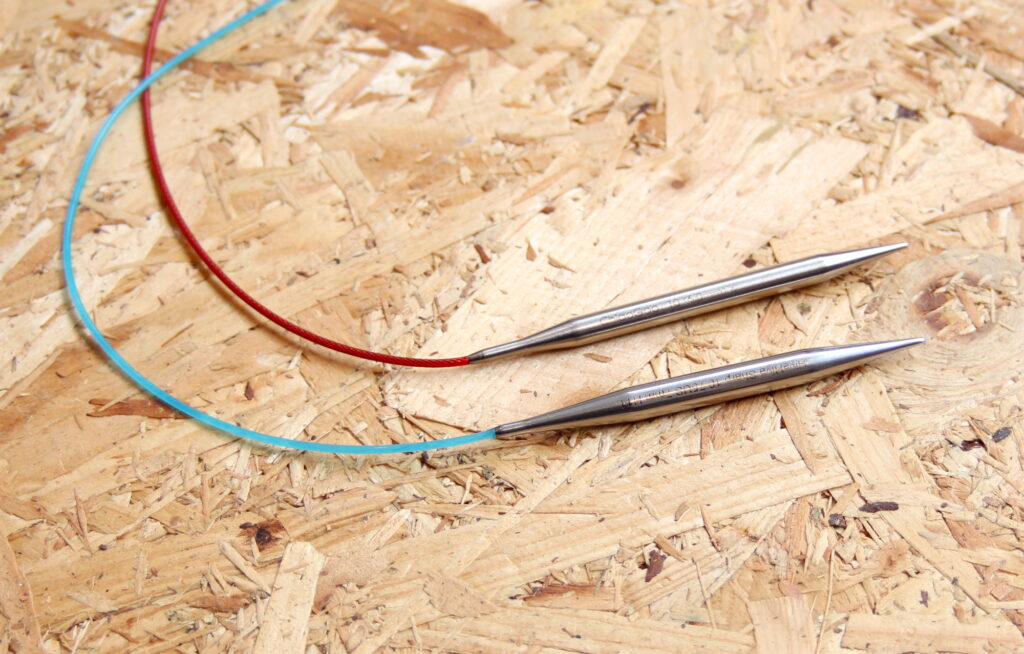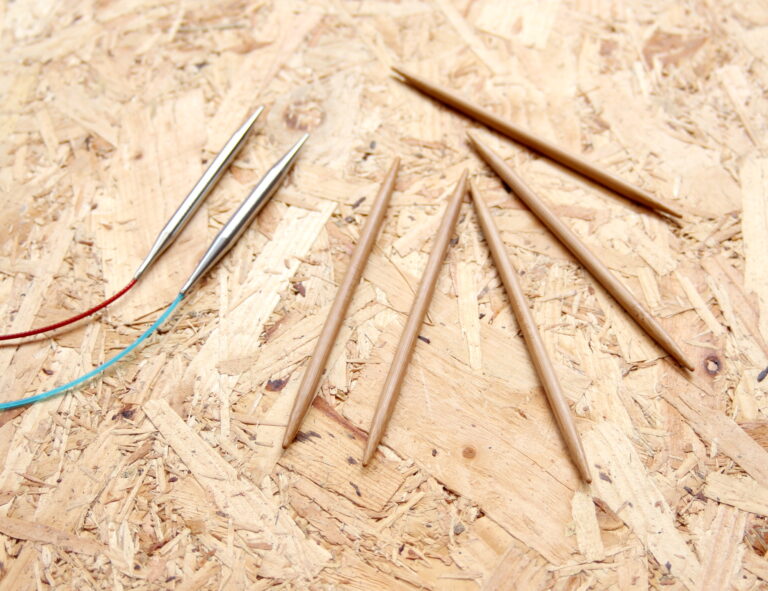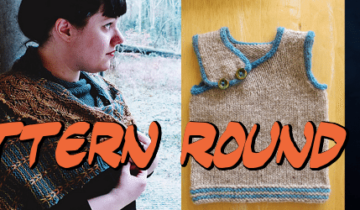Interchangeables, circulars, DPNs, straights, bamboo, steel: there are so many options when it comes to needles and as a beginner it can be overwhelming. Although finding the right needles is mostly a matter of personal preference there are definitely key characteristics to think about when getting a new pair.
1. Straight Needles.
The traditional needles emblematic of the craft. Many beginners find straight needles less intimidating because they might have used them once before or seen them laying around some relative’s house as a child. They feel more familiar. Straight needles are great to get started but due to their limited options of length they only are suitable for smaller sized projects and patterns that are knitted flat. If you start getting serious about your knitting you will feel their limitation pretty quickly.
2. Fixed Circulars.
Circular needles are more versatile than straight needles as they can be used to knit both in the round and or knit flat by turning your work at the end of each row. Another benefit to circulars is not having to hold up the weight of all the stitches. The weight of your WIP remains at the centre of your cable which can drape into your lap instead of shifting from one needle to the other while having to hold them all up at once. This makes knitting less tiring on the arms and shoulders. As most patterns are now designed in the round circulars have superseded straight needles and are by far the most popular needles amongst knitters.
There are three things you should look for when buying circulars. First, what are the tips made of? We would always recommend using wood or stainless steel as plastic tips are most often not sharp enough and make knitting less enjoyable at the result.

Second, what is the cable made of? Cables can either be made of nylon like in the Hiya Hiya collection or of nylon-coated stainless steel like in the ChiaoGoo range. Plain nylon cables are very flexible which make them particularly good for magic loop. Their downside is that overtime nylon cables can develop kinks. This doesn’t affect the knitting in any way but just make the cable looks uneven.
Nylon-coated steel cables are very sturdy and completely memory free. They are very good for heavy projects but are not quite as flexible as their plain nylon counterpart.
Lastly, the join in between the cable and tips should be strong and completely seamless. An uneven join will catch the stitches as you knit stopping you getting into a nice flow. Weak joins are prone to breakage so you really want to make sure the ones on your needles are sturdy. Both ChiaoGoo and Hiya Hiya circulars have very strong seamless joins which make them very comfortable to knit with.
3. Interchangeables.
For committed knitters it is worth considering investing into some interchangeables. Although they can be more expensive to start with they are the best way to save money in the long run. Why? Consider this: an average jumper pattern uses at least needles of 2 different sizes – one for the ribbing and one for the main body – and cables of 2 different length. With fixed circular this requires you to buy at least 4 pairs of needles just for one single project.
Interchangeable gives you the possibility to combine cables and needles of different sizes and lengths to adapt them to your pattern. The same pair of tips can be used for a hat, a shawl or a jumper by varying the length of the cable attached to them. Once you’ve got needles of each size and cables of each length you won’t need to keep adding to your collection and you’ll be able to tackles any kind of pattern. Cables and tips can be bought individually or in set. ChiaoGoo interchangeables offers tips in both bamboo and steel as well as cable in nylon and nylon-coated seel.

4. Double Pointed.
DPNs are used to knit small circumference items like socks, mittens and sleeves. These can also be knitted with long circular needles using the magic loop method or with two pairs of short circulars. These techniques are all equally good so whichever you decide to go for really is a matter of personal preference. When knitting stranded colourwork on small circumferences however we find that DPNs allows for a more even work than circulars.

5. Bamboo vs. Steel.
Steel tips are more slippery so great for speed and they tend to be a little bit sharper too. Wood is grippy making it harder to drop a stitch. If you’re knitting a project with lace for example you might enjoy the extra control wood gives you. We’d always recommend trying them both to see what work best for you. Personally I use steel for most of my projects unless I am knitting with DPNs in which case I use bamboo instead. The grip of the wood make the DPNs stay in place better and so they’re less likely to slip off the stitches.
Once you completed a few projects on straight needles and you’re ready to give circulars a go try a few different makes and material to see which ones suit you best. This might evolve as you get more confident with your knitting so it is always good to keep an open-mind and try new needles every now and then.
New to knitting? Click here to browse more of our beginner tutorials.
Until Next Time… Happy Knitting!




 No products in the basket.
No products in the basket.